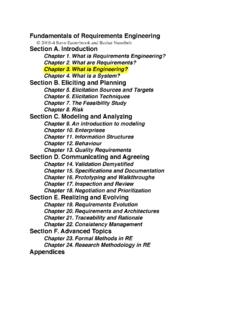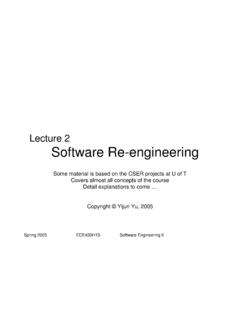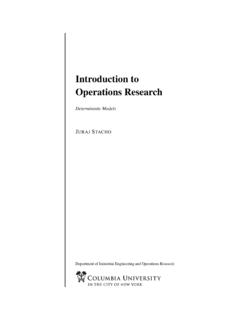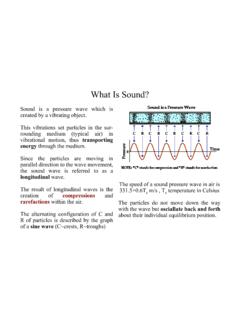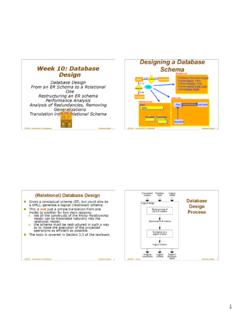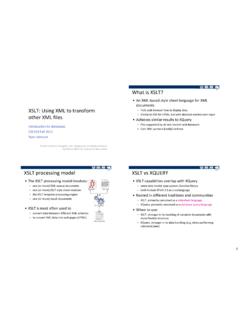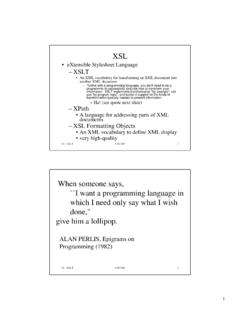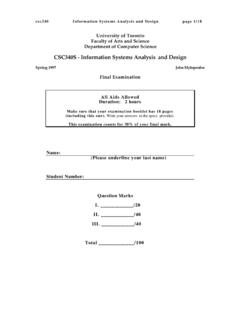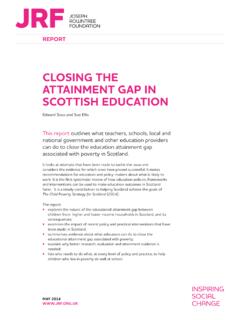Transcription of DeepFace: Closing the Gap to Human-Level Performance in ...
1 DeepFace: Closing the Gap to Human-Level Performance in Face VerificationYaniv TaigmanMing YangMarc Aurelio RanzatoFacebook AI ResearchMenlo Park, CA, USA{yaniv, mingyang, WolfTel Aviv UniversityTel Aviv, modern face recognition, the conventional pipelineconsists of four stages: detect align represent clas-sify. We revisit both the alignment step and the representa-tion step by employing explicit 3D face modeling in order toapply a piecewise affine transformation, and derive a facerepresentation from a nine-layer deep neural network. Thisdeep network involves more than 120 million parametersusing several locally connected layers without weight shar-ing, rather than the standard convolutional layers.}
2 Thuswe trained it on the largest facial dataset to-date, an iden-tity labeled dataset of four million facial images belong-ing to more than 4,000 identities. The learned representa-tions coupling the accurate model-based alignment with thelarge facial database generalize remarkably well to faces inunconstrained environments, even with a simple method reaches an accuracy of on the LabeledFaces in the Wild (LFW) dataset, reducing the error of thecurrent state of the art by more than 27%, closely approach-ing Human-Level IntroductionFace recognition in unconstrained images is at the fore-front of the algorithmic perception revolution. The socialand cultural implications of face recognition technologiesare far reaching, yet the current Performance gap in this do-main between machines and the human visual system servesas a buffer from having to deal with these present a system (DeepFace) that has closed the ma-jority of the remaining gap in the most popular benchmarkin unconstrained face recognition, and is now at the brinkof human level accuracy.
3 It is trained on a large dataset offaces acquired from a population vastly different than theone used to construct the evaluation benchmarks, and it isable to outperform existing systems with only very minimaladaptation. Moreover, the system produces an extremelycompact face representation, in sheer contrast to the shifttoward tens of thousands of appearance features in other re-cent systems [5, 7, 2].The proposed system differs from the majority of con-tributions in the field in that it uses the deep learning (DL)framework [3, 21] in lieu of well engineered features. DL isespecially suitable for dealing with large training sets, withmany recent successes in diverse domains such as vision,speech and language modeling.
4 Specifically with faces, thesuccess of the learned net in capturing facial appearance ina robust manner is highly dependent on a very rapid 3 Dalignment step. The network architecture is based on theassumption that once the alignment is completed, the loca-tion of each facial region is fixed at the pixel level. It istherefore possible to learn from the raw pixel RGB values,without any need to apply several layers of convolutions asis done in many other networks [19, 21].In summary, we make the following contributions : (i)The development of an effective deep neural net (DNN) ar-chitecture and learning method that leverage a very largelabeled dataset of faces in order to obtain a face representa-tion that generalizes well to other datasets; (ii) An effectivefacial alignment system based on explicit 3D modeling offaces; and (iii) Advance the state of the art significantly in(1) the Labeled Faces in the Wild benchmark (LFW) [18],reaching near human- Performance ; and (2) the YouTubeFaces dataset (YTF) [30], decreasing the error rate there bymore than 50%.
5 Related WorkBig data and deep learningIn recent years, a large num-ber of photos have been crawled by search engines, and up-loaded to social networks, which include a variety of un-constrained material, such as objects, faces and large volume of data and the increase in compu-tational resources have enabled the use of more powerfulstatistical models. These models have drastically improvedthe robustness of vision systems to several important vari-ations, such as non-rigid deformations, clutter, occlusionand illumination, all problems that are at the core of manycomputer vision applications. While conventional machine1learning methods such as Support Vector Machines, Prin-cipal Component Analysis and Linear Discriminant Analy-sis, have limited capacity to leverage large volumes of data,deep neural networks have shown better scaling , there has been a surge of interest in neu-ral networks [19, 21].
6 In particular, deep and large net-works have exhibited impressive results once: (1) theyhave been applied to large amounts of training data and (2)scalable computation resources such as thousands of CPUcores [11] and/or GPU s [19] have become available. Mostnotably, Krizhevsky et al. [19] showed that very large anddeep convolutional networks [21] trained by standard back-propagation [25] can achieve excellent recognition accuracywhen trained on a large recognition state of the artFace recognition er-ror rates have decreased over the last twenty years by threeorders of magnitude [12] when recognizing frontal faces instill images taken in consistently controlled (constrained)environments.
7 Many vendors deploy sophisticated systemsfor the application of border-control and smart biometricidentification. However, these systems have shown to besensitive to various factors, such as lighting, expression, oc-clusion and aging, that substantially deteriorate their perfor-mance in recognizing people in such unconstrained current face verification methods use , these features are often combinedto improve Performance , even in the systems that currently lead the perfor-mance charts employ tens of thousands of image descrip-tors [5, 7, 2]. In contrast, our method is applied directlyto RGB pixel values, producing a very compact yet neural nets have also been applied in the past toface detection [24], face alignment [27] and face verifica-tion [8, 16].
8 In the unconstrained domain, Huang et al. [16]used as input LBP features and they showed improvementwhen combining with traditional methods. In our methodwe use raw images as our underlying representation, andto emphasize the contribution of our work, we avoid com-bining our features with engineered descriptors. We alsoprovide a new architecture, that pushes further the limit ofwhat is achievable with these networks by incorporating 3 Dalignment, customizing the architecture for aligned inputs,scaling the network by almost two order of magnitudes anddemonstrating a simple knowledge transfer method once thenetwork has been trained on a very large labeled learning methods are used heavily in face ver-ification, often coupled with task-specific objectives [26,29, 6].
9 Currently, the most successful system that uses alarge data set of labeled faces [5] employs a clever transferlearning technique which adapts a Joint Bayesian model [6]learned on a dataset containing 99,773 images from 2,995different subjects, to theLFWimage domain. Here, in order(a)(b)(c)(d)(e)(f)(g)(h)Figure pipeline.(a) The detected face, with 6 initial fidu-cial points. (b) The induced 2D-aligned crop. (c) 67 fiducial points onthe 2D-aligned crop with their corresponding Delaunay triangulation, weadded triangles on the contour to avoid discontinuities. (d) The reference3D shape transformed to the 2D-aligned crop image-plane. (e) Trianglevisibility to the fitted 3D-2D camera; darker triangles are less visible.
10 (f) The 67 fiducial points induced by the 3D model that are used to directthe piece-wise affine warpping. (g) The final frontalized crop. (h) A newview generated by the 3D model (not used in this paper).to demonstrate the effectiveness of the features, we keep thedistance learning step Face AlignmentExisting aligned versions of several face databases ( [29]) help to improve recognition algorithms by pro-viding a normalized input [26]. However, aligning facesin the unconstrained scenario is still considered a difficultproblem that has to account for many factors such as pose(due to the non-planarity of the face) and non-rigid expres-sions, which are hard to decouple from the identity-bearingfacial morphology.
